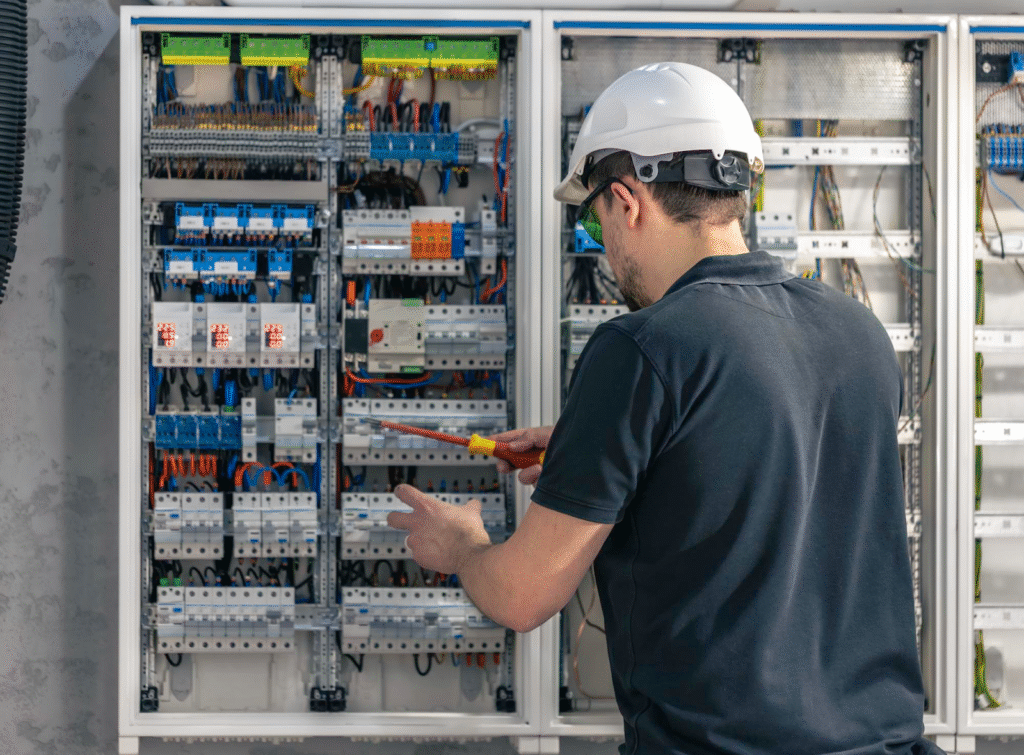
You flick a switch and the light comes on, or you plug a device and it powers up immediately – we often don’t think much about where electricity is coming from. Let’s change that one system at a time!
One of the most important parts of the electrical system is a distribution board. It is often tucked away in the utility room or hidden behind the garage door, and remains this way until there’s a short circuit.
Whether you’re renovating a home, running a commercial building, or working for an industrial facility, understanding the importance of a distribution board is super important. Keep reading to know its benefits, features, and types.
What is a Distribution Board?
A distribution board is the central hub of an electrical system. It is the point where electricity from the main power supply is divided into different circuits. And that’s not it – this metal box makes sure every circuit gets the appropriate amount of power, preventing short circuits, overloads, and other faults.
Commonly known as a DB, it consists of numerous components. This includes:
- Circuit breakers
- Busbars
- Residual current devices (RCDs)
- Neutral and earth bars
- Main switch
- Enclosure or the DB box
Benefits of a Distribution Board
So, why is a distribution board even important? Let’s dive in:
Enhanced safety
Safety is the primary benefit of a distribution board. The short circuits and fuses automatically cut off power in the event of an overload or short circuit. This reduces the risk of electrical fires, equipment damage, and personal injury.
Efficient power distribution
High-quality distribution boards make sure power is efficiently distributed across all the circuits. This is especially important in industrial settings, where heavy machinery needs a stable power supply to keep working properly.
Easy fault detection
When a circuit trips, a distribution board quickly identifies the issue and isolates the affected area. This makes maintenance and troubleshooting faster and more efficient, minimising downtime.
Compliance with electrical safety standards
Modern DBs are designed to meet advanced safety standards set by regulatory bodies. This is important for personnel safety and proper handling. An efficient distribution board will save you from potential legal issues.
Types of Distribution Boards
Not all distribution boards are the same. Their capacity and power distribution capabilities vary. The three types of DBs by hierarchy include:
Main Distribution Board (MDB)
It can handle high-voltage power from the utility and distribute it to various sub-panels. MDBs are used in large facilities or commercial buildings.
Sub-Main Distribution Board (SMDB)
SMDBs help spread power from an MDB to different sections of a building, such as individual floors or departments.
Final Distribution Board (FBD)
A final distribution board (FDB) is commonly found in homes and small offices. It distributes power directly to end-user circuits like lighting and sockets.
Industries That Need a Distribution Board
Distribution boards are used across a plethora of industries, such as:
- Manufacturing plants
- Construction sites
- Healthcare facilities
- Data or IT centres
- Commercial buildings or offices
- Warehouses
- Shopping malls
- Residential buildings







Leave a Comment